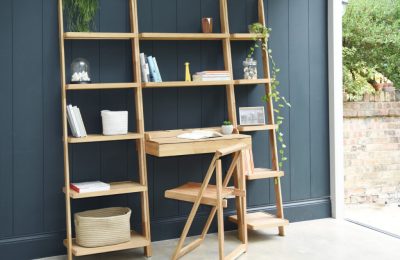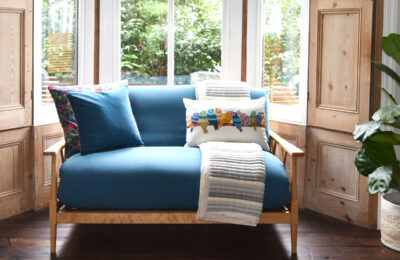
Green fingers at the ready as May celebrates all things green! We start the month with National Gardening Week (2 – 8 May), an annual celebration that highlights the benefits of gardening while inspiring novice gardeners “to experience the joy of growing”. Throughout the week, key events will take place at the RHS (Royal Horticultural Society) Gardens up and down the country.
And of course, May wouldn’t be complete without one of the hottest events in the British social calendar. Running from 24 – 28 May, the RHS Chelsea Flower Show will resume its original slot at the Royal Hospital Chelsea for the first time since 2019. This year, while we eagerly wait to see what the show has in store for us, we can also join in and partake from the comfort of our homes.
No garden? No problem. It’s not just about the outdoors: adding freshness and the feeling of life to our interior is also important – especially for those living in small homes or lacking outdoor space. Houseplants have become a much-loved phenomenon in recent years and rightly so. Not only do they help clean the air, they also aid concentration, reduce stress and enhance overall wellbeing.
Whether you’re an accomplished pro or a new starter struggling to keep anything alive (plants of course), it’s time to elevate your home with some greenery. Give your flower bulbs and plants the homes they deserve – and some proper TLC. Not sure where to start? Here’s how – as recommended by experts from the RHS.

Before you get started
● Check to see if you can provide the growing requirements of plants that interest you – by reading the plant label or doing some research online;
● Look for strong robust plants – firstly, they should be balanced in shape and have no dieback; secondly, their leaves are healthy with no discolouration; and thirdly, compost should be clean, weed and algae free;
● Check for the presence of pests and avoid plants with common fungal diseases;
● Get the most out of flowering plants – choose those with unopened buds as they will be in flower for longer; and
● Cover the plant when transporting it home to avoid exposure to cold, especially in winter.

Planting
● Research your plant to see how much light is optimal for good growth – for example, in winter, houseplants will benefit from full sunlight when daylight is weak; whereas in summer, strong sunlight can scorch susceptible plants;
● Research the minimum temperature tolerance for your plant before positioning it – excessive heat can cause those preferring cooler conditions to dehydrate and wilt, while overly low temperatures can result in those liking a warmer spot to collapse and rot;
● Choose a pot size 5 – 10cm larger in diameter than the current pot, or enough space for growth for the next two to three years;
● Place the plant on a saucer and group multiple ones together to benefit from local humidity – created by the combined moisture given off by their leaves; and
● Repot every two to three years as compost degrades in time and compacts, reducing the volume of air reaching the roots which can result in diseases.

Ongoing care
● Water thoroughly when the surface of the compost becomes dry;
● Containers should have a drainage hole to enable the water to escape and the plant’s roots to breathe;
● In winter, houseplants can be left for a week or two without water as long as the room temperature is cool; whereas in summer, plants are more active and dry out faster with higher temperatures; and
● Plants are best fed during the growing season, i.e from March to October; use liquid fertiliser once or twice a month, or granular fertiliser once or twice a season.
Click here to read the full How to Grow Houseplants guide from the RHS.


Meanwhile, if you’re after some stylish garden accessories to create your very own plant-filled sanctuary, then look no further than plant pots and stands. They help add textures and depth to a room respectively; choose materials such as metal and terracotta for the former, and wood and rattan for the latter. And if you’re short on space, try wall-mounted shelves or hanging woven baskets – they’re perfect for small plants like ferns, succulents and baby’s tears.


For more information about National Gardening Week and what’s in store at Chelsea Flower Show this year, visit:
●
●





